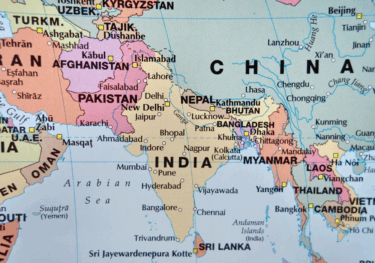News | 22 May 2025
Oxford Economics Launches Global Cities Index 2025

The global economy is in the midst of a period of acute uncertainty. Trade tensions and deglobalisation are causing considerable headwinds to economic growth worldwide, potentially triggering substantial shifts in supply chains and the way countries do business with each other over the coming years. Despite these uncertainties, top cities continue to be at the forefront of growth, bringing together knowledge and resources to tackle the most pressing issues.
In response to this backdrop, Oxford Economics is proud to launch the 2025 update of the Global Cities Index. First introduced in 2024, the Index ranks the top 1,000 cities worldwide, offering insights into how cities are adapting and thriving in a rapidly changing environment.
“The 2025 update of the index provides invaluable, data-driven insights for policymakers and business leaders, enabling them to unlock the potential of urban economies,” said Anthony Bernard-Sasges, Senior Economist, City Services at Oxford Economics, and lead author of the report.
Eight of the top 10 cities are the same as last year, and New York and London remain in the top spots for the second year running. Two new cities enter the top 10 this year: Boston and Sydney. Sydney takes the seventh spot due to an improvement in its Quality of Life and Environment scores, while Boston saw an increase in its Economics score.
“Several cities in India, Indonesia, and the UK have risen in the rankings this year, whereas Japanese, Canadian, and Brazilian cities mostly fell,” Bernard-Sasges noted. “Cities in the US, China, Australia, and continental Europe experienced a mix of outcomes,” the index states.
To better understand the diverse pathways of urban development, Oxford Economics has classified cities into distinct archetypes based on shared characteristics. These archetypes are: Global Leaders, Regional Leaders, Cultural Capitals, Sustainable Cities, Industrial Hubs, Legacy Cities, Developing Megacities, and Emerging Standouts.
Each city archetype faces unique opportunities and challenges, Bernard-Sasges added. “The report also explores future trends that will shape the development of cities, including the impact of generative AI, climate change and demographic shifts.”
Media enquires
Please contact Julio Urdaneta at jurdaneta@oestaging.oxfordeconomics.com.
Authors behind this report

Mark Britton
Director, City Services

Mark Britton
Director, City Services
London, United Kingdom
Mark Britton is a Director within Oxford Economics’ Cities Team. He leads a team of economists to provide clients with global city-level forecasts and research through a range of subscription products and consultancy projects.
Mark has 20 years’ experience in regional forecasting, model building and economic analysis for a broad range of clients across both the public and private sectors. He has a keen interest in developing quantitative solutions using a range of data science, econometric and geospatial techniques to provide organisations around the world with the tools to make more informed location decisions.

Anthony Bernard-Sasges
Senior Economist, Cities & Regions

Anthony Bernard-Sasges
Senior Economist, Cities & Regions
London, United Kingdom
Anthony Bernard-Sasges is a Senior Economist in the Cities & Regions forecasting team. He primarily produces research and forecasts for cities in the United States and Canada. Anthony also manages the Oxford Economics Global Cities Index and helps develop the team’s geospatial data analysis capabilities.

George Bowen
Lead Economist, Cities & Regions

George Bowen
Lead Economist, Cities & Regions
London, United Kingdom
George is a Lead Economist in the Cities and Regions forecasting team. He manages Oxford Economics’ Global Cities forecasting service and associated research. George is also responsible for the team’s Middle Eastern regional forecasts, supporting clients on a range of bespoke projects.
Tags:
You may be interested in

Post
A region of expansion and inequality: The highs and lows of Southern Asian cities
Our Global Cities Index shows that whilst Southern Asian cities do not top the overall rankings, they are important global players, with particularly strong economic performance.
Find Out More
Post
Industrial Hubs: Finding opportunity amid the challenges
Although each legacy city confronts distinct obstacles, they also possess distinctive strengths that can be harnessed for success in today's world. The Global Cities Index reveals that these cities can study successful examples and apply those insights to develop effective approaches for thriving in our fast-evolving global landscape.
Find Out More
Post
Legacy cities: historic centres that must relearn lessons in growth
Although each legacy city confronts distinct obstacles, they also possess distinctive strengths that can be harnessed for success in today's world. The Global Cities Index reveals that these cities can study successful examples and apply those insights to develop effective approaches for thriving in our fast-evolving global landscape.
Find Out More